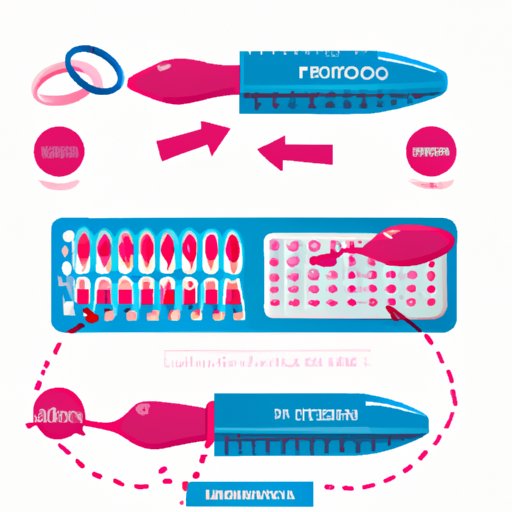
Introduction
Pre-ejaculation is a fluid that is released by the penis during sexual arousal, in preparation for ejaculation. It is often referred to as “pre-cum,” and can be a source of concern for those who are sexually active and not intending to become pregnant. In this section, we will provide a brief explanation of the topic, as well as an overview of why it is important to discuss.
The Mechanics of Pre-ejaculate and Sperm
Before delving into the topic of pregnancy and pre-ejaculation, it is important to first understand what pre-ejaculate is and how it is produced. Pre-ejaculate is a clear, lubricating fluid that is released by the Cowper’s gland within the male reproductive system. The purpose of this fluid is to neutralize any acidity in the urethra before ejaculation occurs, providing a more hospitable environment for sperm to travel through.
While the fluid is primarily a lubricant, there is an ongoing debate about whether or not pre-ejaculate can contain sperm. It is widely believed that it is possible for sperm to be present in pre-ejaculate, although the likelihood of this occurrence is low.
That being said, it is important to note that there are numerous misconceptions surrounding pre-ejaculation and its safety as a form of contraception. Some people believe that pre-ejaculate does not contain sperm at all, or that it does not pose a significant risk of pregnancy when compared to full ejaculation. These views are not accurate and could lead to unintended pregnancy.
Effectiveness of Various Forms of Birth Control
When it comes to preventing pregnancy, there are numerous forms of birth control available. These include barrier methods like condoms and diaphragms, hormonal methods like the birth control pill and the patch, and long-term methods like intrauterine devices (IUDs) and implants.
Each form of birth control has its own level of effectiveness in preventing pregnancy. When used correctly and consistently, most forms of birth control have a success rate of over 90%. However, it is important to note that human error can occur, and that no method of birth control is 100% effective in preventing pregnancy.
One method of birth control that is often used but not recommended is the withdrawal method, also known as “pulling out.” This method involves the male partner withdrawing his penis before ejaculation occurs, in an attempt to prevent sperm from entering the partner’s body.
While this method may seem like a viable option for preventing pregnancy, it is important to note that it is not an effective form of contraception. According to studies, up to 27% of couples who rely solely on the withdrawal method for birth control end up becoming pregnant within a year.
Emergency Contraception
In some cases, emergency contraception may be needed to prevent pregnancy after unprotected sexual intercourse. Emergency contraception is a form of birth control that can be used up to five days after sex, in order to prevent fertilization or implantation of an egg. This can include progestin-only pills, intrauterine devices (IUDs), and emergency contraceptive pills like Plan B.
It is important to note that emergency contraception should not be used regularly or as a substitute for regular birth control. These methods are designed for use in emergency situations, and should not be relied upon as a primary form of birth control.
Steps to Protect Against Unintended Pregnancy
Ultimately, the best way to protect against unintended pregnancy is to use multiple forms of contraception and to communicate with your partner about their preferred methods. This can include using both condoms and hormonal methods like the pill, as well as considering long-term forms of contraception like IUDs and implants.
It is also important to know where to access reliable information and resources about contraception. Healthcare providers, family planning clinics, and sexual health organizations can all provide information and support to those who need it.
Common Misconceptions about Pre-ejaculation and Pregnancy
As mentioned earlier, there are many misconceptions surrounding the topic of pregnancy from pre-ejaculation. These can include beliefs that pre-ejaculation does not contain sperm at all, or that it is not an effective form of contraception compared to full ejaculation.
It is important to dispel these myths and provide accurate information, in order to prevent unintended pregnancies and promote safe sexual practices.
Conclusion
In conclusion, while pre-ejaculation may contain sperm, the likelihood of pregnancy occurring from this fluid alone is low. However, it is important to take steps to protect against unintended pregnancy, including the use of reliable forms of birth control and communication with your partner.
By understanding the science behind pre-ejaculation and sperm, as well as the effectiveness of various forms of contraception, individuals can make informed decisions about their sexual health and reduce the risk of unwanted pregnancy.




